Rolls-Royce has reached agreement with Bell Textron to provide the propulsion system for the V-280 Valor aircraft as it moves forward in the competition for the U.S. Army’s Future Long-Range Assault Aircraft (FLRAA) programme.
Rolls-Royce say it will provide the propulsion solution for the refined V-280 Valor design as well as an advanced Infrared Suppressor system to deliver greater range and enhanced survivability to the Army.
“Through early collaboration on the system from the inlet to the suppressor, Bell and Rolls-Royce will deliver a low-risk and reliable integrated propulsion solution to the Army.”
Adam Riddle, Rolls-Royce Defense, Executive Vice President, Business Development and Future Programs, said in a news release:
“Rolls-Royce is excited to be a part of the Bell V-280 Team Valor to compete in the U.S. Army FLRAA program. Rolls-Royce brings a wealth of tilt-rotor and infrared suppressor experience to Team Valor, as well as over 50 years of successful collaboration with Bell.”
Ryan Ehinger, Bell, Vice President and Program Director for FLRAA, said:
“We are excited to work with Rolls-Royce to deliver a propulsion system that integrates game-changing performance with lifecycle affordability from the start to help our customers achieve their goals. Bell and Team Valor members are applying our collective vertical flight expertise to create aircraft capable of delivering a transformational capability to soldiers.”
In addition to extensive experience with defense and commercial aircraft, Rolls-Royce also designed and supports an advanced infrared suppressor system that has been in operation with U.S. Army MH-47 special operations helicopters for more than a decade, and a variant of that infrared suppression system recently entered service on Air Force AC-130W gunships.
The next phase of the FLRAA program will include competitive demonstration and risk reduction.



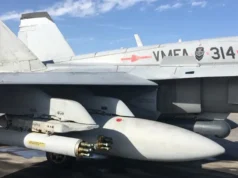

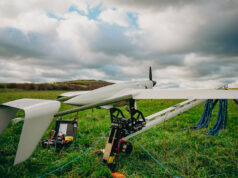
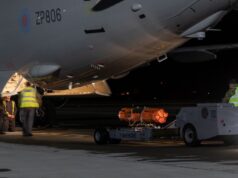
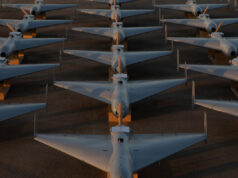
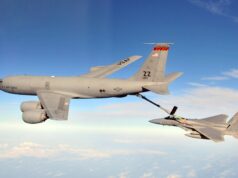
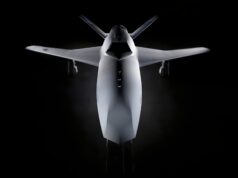

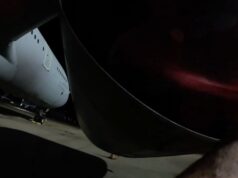
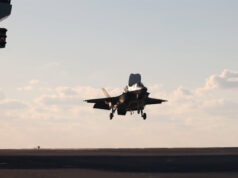

Let’s hope this has a safer record than the Osprey. And the obligatory: Why not stick awacs on this beauty and fly from HMS QE
Or at least get a few for A2A refuelling for our F35s.
Yeah that would be great, looks like it has plenty room for the gear.
How would load a fuel tank in it? No rear ramp!
Indeed you cant just adapt an aircraft to do that job there are all sorts of aerodynamic and airflow factors, let alone structural implications to consider. Just think of how long its taken to get the A400 able to deploy paras.
Yes but the A400 was meant to be able to deploy paras from conception not as some bonus feature.
Yes that is right – wasn’t it the case that the A400 produces some excessive wake turbulence due to its counter-rotating props that its modern design,modelling and production techniques failed to predict ?
Actually it was predicted by several engineers on the project but Airbus ignored them because it was so far behind.
The problem was to many cooks spoil the broth , trying to cram so many things into a brand new design with brand new engine designs.
Interesting fact the A400 costs France €152 million a plane , Germany €175 million and the uk €156 million and that is just for the base plane without any extras.
As the smaller and less capable Hercules C-130J costs between $110m and $160m a plane on the international market (dependent on level of military export subsidy and the other weapons packaged in the trade deal) thats still a competitive price.
€156 million euros = $175 million dollars plus you have to add in the costs of training and maintenance infrastructure for the A400 which according to the MoD answer to defence select Committee was £800 million.
Remember we already had the training and infrastructure for the Hercules and our 14 Hercules C130J cost 900 million euros .
And you neglected to mention the 23 billion euro cost development of the A400 meaning the program will never break even .
I am not anti A400 it is a stunning plane but as we have a limited budget we need to actually buy what we need not what we would like.
And in the case of the A400 it was rose tinted glasses time .
The Germans are still trying to cancel 30 planes from there order or sell the options .
The French had to order the C130J because the A400 cannot refuel helicopters .
Actually the A400M demonstrated a month ago that it can refuel helicopters, it’s just 5 or 10 years late, like the two door paratrooper deployment feature.
I read the article but it cannot refuel the range of helos like the C130J .
All these issues were pointed out by the engineers at a very early stage and totally ignored by Airbus.
Like I said a beautiful plane but it will never achieve success like the Hercules .
What?… A big corporation ignoring engineers because they’re focused on profits rather than actual safe operational use??? I cant see that ever happening……NOT!!!
For the Nth time: All aircraft suffer from the same problem. Some more than others. It is particularly acute in the A400M because of the exact symmetry of its airflow round the back of the aircraft doe to the handed nature of the propeller rotation. It increases the likelihood of paratroopers coming together behind the aircraft when jumping simultaneously from both para doors. The A400M nations actually applied higher safety standards on the aircraft than they’ve been accepting for years on the C130Js. And not just in this area, in all areas. Basically Airbus was asked to develop an aircraft as safe as the safest civil airliner with all the military attributes of all preceding military transport aircraft on top. In many areas this turned out to be an impossible brief. Anyway, problem has been resolved now. So that’s the good news. The bad news is that far from greedily racking in the profits, Airbus has lost money on this programme hand over fist.
As per normal with Airbus, everything takes yonks and costs a bomb, it’s quite frustrating but I’m proper impressed with the A-400 even though its had major problems in the “para” transport role due to airflow issues…….that’s a bit of a concern, especially if you’re standing in the doorway ready to jump.
Not only that but Air Tanker have a contract that states that A2A re-fuelling is their exclusive domain which is why we’ll never see the Atlas, in RAF colours, carrying out refuelling duties
Well if one was really intent on having V-280 perform a COD/Tanker role then one might “hinge” the tail, although the rear landing gear would have to be moved forward of the hinge point. But actually the simpler approach would seem to be having a large side door for loading. No ramp option in either case, but we have fork lift technology for that.
Nope, it is too small! Don’t forget this aircraft along with the Defiant are part of the competition designed to replace the Blackhawk for the US Army and possibly the Huey for the USMC. It is meant to have the same footprint as the Blackhawk, which is about the same as a Puma.
The Osprey is equivalent in size to a Merlin (it’s actually smaller) but has a better lift capacity. This is the aircraft you’d need for the refuelling role.
Yes I support both your and Cams idea.
Fingers crossed we see a naval version that can carry out AAR, CSAR and AWACS there are a number of countries that will soon be operating F35 from small carriers and such a program is more feasible than ever. V22 is too expensive to fit in the role for most.
Let’s hope the Americans want it as a future for its marine assault ships and we can piggy back on their research and testing.
Maybe replacing the RAF’s Puma?
I suspect the 16 long range chinook we plan to buy but never placed an order on will be the replacement for the Puma.
But a Chinook cannot land in confined compounds, a Puma can.
Yes this craft looks a far better all-round bet potentially than the Osprey for our forces. Though depends on how it gets on and developed for US forces first I guess so that we can indeed piggyback on those developments.
You assume the replacement decision will be based on needs rather than money. I would guess that the MOD will see that having less types of helicopter will bring down maintenance costs and that the wildcat can fill in for smaller roles.
Nope, they will be replacing the original Chinooks we bought back in the early 80’s.
The V-280 does Not have a rear loading ramp because of a narrow rear fuselage, making it unsuitable for COD and air to air refueling. The V22 would be better in that area.
Pretty sure the refueling V22 has been cancelled
Actually I think VARS entered service last year .
Most likely V-280 would be suitable for AEW, but Not COD.
Having Rolls Royce involved might increase the chances have a UK purchase.
Cheers CR
Good for RR and the UK, but these engines are built outside the UK aren’t they?
The V-22 has also got Rolls Royce engines.
Fundamentally Allison engines I believe on the V-22 I am assuming also for the Valor though not sure what cross fertilisation they now have with RR designs so may not be distinct anymore. The Valor is a big win for RR it seems, as it was originally powered by GE not sure whats happened to make it change but would seem that Bell and RR have now entered into a long term agreement to develop engine and lift systems together so the acquired expertise and long term commitment could be very exciting for the company in a wider perspective especially as aircraft of this nature start to be produced in Europe.
Nope, this would be better
https://en.m.wikipedia.org/wiki/Bell_V-247_Vigilant
Yeah but for special forces and longer range commando raids ect this Valor would be better. But unmanned for awacs ect would be better, but that’s adding another platform when the merlin does several, I suspect we will go with “ah the Merlins good enough to do all the jobs no need on a new platform”…
Realistically we are not going to fund the cost of converting anything to do these roles as even the basic conversion of crowsnest is going badly wrong.
We will wait for the US to fund it and then consider buying off the shelf solutions, but i suspect it won’t get any further than consideration as its just not affordable.
Sean,
The V280 can carry 14 troops and a significantly bigger payload, so would perhaps be better suited to some of the roles highlighted above e.g. troop carrying and AAR perhaps. The Vigilant would be a very useful light weapons carrier and reccie platform particularly for smaller vessels. I lije the single engine concept as well – cheaper and easier to run I should think…
Cheers CR
The fuel tank would need to be built in, but rendering a V-280 Not to be use for anything else. With a V-22 you just load in a fuel tank in the rear doorway.
The V-280 is a similar size to the Puma, it is a question of can a V-280 do what a Puma can?
The Valor has been primarily designed to replace the Blackhawk and the all roles it does with the US Army, taxi, special forces long range insertion, medivac etc. The Blackhawk and Puma are comparable in size and the have nearly the same landing footprint. One of the stipulations for the Valor was to match the Blackhawk’s footprint. I think the fuselage footprint is the same, but the overall rotor diameter is slightly wider, but narrower. So it will be interesting to see how the US Army judge this, especially when you compare the Defiant’s rotor diameter footprint is actually smaller than the Blackhawk’s.
The USMC have said they want to replace their fleet of Hueys, so are looking at the two competing designs. Bell have shown a mock-up of a marinised Valor, complete with a folding main-wing and rotors. Personally, I think the best aircraft for the USMC is the Valor, as it has better range and a higher speed over the Defiant. However, for the US Army it’s slightly trickier. The Defiant, I believe will have the edge landing in tighter spots and will be nimble low level hedge hopping, but will this sway the judgement over greater speed and range of the Valor?
I think the agreement between RR and Bell includes this project too though my memory may be deceiving me there.
Just checked it does. I wonder if Rolls has sights on future possible use of these platforms with UK forces, would be a nice bonus for this new business if it does.
Well Cam, the Osprey did acquire the unfortunate nickname of “widow maker” due to its very difficult conception and development so yes……let’s hope this Bell offering has a happier and safer beginning.
There were so many horrific crashes during the Osprey project but it has eventually blossomed into a pretty decent machine, I was hoping that the Royal Navy would buy some for the carriers but maybe they held off because they knew that the Bell V-280 Valour was in development……
Some of the early issues were down to pilot induced errors. It was found that those that came from a conventional background rather than helicopter struggled with compensating for ground effect, so they couldn’t manage the accelerated sink rate. The USMC changed the training requirement for Osprey, where you had to do helicopter training prior to conversion onto Osprey.
has it/will it have 4–5 hour flight duratioon and can it fly up to 15k? if so then its a good choice
because, as nice as it would be. It would mean and extra set of engineers, spares and the loss of places for a 35. Doesnt mean it couldnt happen but it’s a trade off
It looks like it has a lot of potential and much of the developmental issues associated with the first generation V22 should be addressed. Oddly though, my concern about it in the tactical assault lift mission which would be its bread and butter, is the additional width of the winglets and rotors.
As a holder of the U.S. Army’s Pathfinder torch, what it means to me is a severe reduction in the number of aircraft that can be safely landed in an LZ. It would require multiple landing phases and when maximum force in numbers and total surprise are required, this could be problematic. Maybe I’m just overthinking it…
Cheers
From what I’ve read, the Army didn’t specify a “box” footprint that the FLRAA had to fit into, whereas they did for FARA with a box size on 50’x50′ IIRC. So tilt-rotor was automatically excluded from FARA but footprint wasn’t considered critical for FLRAA.
Its interesting to rotate either the V-280, or the UH-60 its targeting to replace, by 90-degrees and then compare footprints. The UH-60 rotor diameter is 3 feet greater than the length of the V-280. Conversely the V-280 width is 18 feet greater than the UH-60 length including rotor.
Compared to the Osprey, the Valor has a number of advantages. The V22 when designed had to compromise on the length of its main wing and therefore its rotor diameter. The US Navy stipulated that the aircraft had to be able to taxi past the island of a Wasp class with 5 foot of room spare on the port and starboard sides. This compromise limited the ideal rotor diameter. Therefore the disc loading was substantially increased. If you have ever waited for a Osprey, you will now how great the downwash is, much like a Chinook. This is due to the aircraft’s smaller rotor diameter, requiring a higher rpm and more collective pitch.
The Valor does not have this problem. The main-wing and rotor diameter are optimised for the size and weight of the aircraft, so its downwash is much lower. Furthermore, unlike the Osprey, the engine are fixed and are about 7 to 8ft above ground level. The Osprey’s swing down, so the exhaust is only 3ft of the deck and in places like Afghan cause brownouts when landing or taking off.
The question of cab rank landing the Valor into a LZ, I think should not be any worse than Blackhawk’s. It does remain to be seen how the downwash compares to a Blackhawk. There’s currently only one flying demonstrator I believe, so they can’t test this out just yet with another following.
The improved characteristics of the V-280 would also seem to improve survivability with respect to single engine operation in operational flight and autorotation in event of total power loss.
Not sure if the V22 can auto-rotate due to it smaller wing and higher disc loading. The AW609 has already shown that a tilt-rotor can auto-rotate, the Valor with is correctly sized wing and rotors “should” also be capable of auto-rotation landings.
Unfortunately there is no money in the MoD equipment budget to fund a new fleet of aircraft.
We would need a minimum of 10 , with trained pilots and co pilots to keep just 3 operational at any time plus the technicians and infrastructure .
Which would cost around 800 million pounds, which we don’t have.
Well the Gov. will need to find the money for a Puma replacement anyway, in a few years time. So the MoD will need to look at the V-280 Valor to see if it is a suitable replacement?
I don’t think the money will be there to replace the puma , the V-280 is about £25 million a piece at current figures but is not due to enter service until 2030 and according to a Pentagon report might not be selected in favour of the Boeing option , we all know how murky American defense procurement is.
How about this to replace Merlin in 10 yrs time?
The Puma will need replacing in a few years time?
The V-280 Valor is of a similar size!
There we go then, puma then Merlin, give us time to develop a maritime patrol version, more fleet commonality too
From the comments a lot of folks seem convinced the UK either has no interest in or can’t afford this platform. I would point you to the agreement just signed between the US and UK which includes an expressed interest by the UK in the Future Vertical Lift programs, both FARA and FLRAA as well as in the US Long Range Precision Fires program. I’m a bit surprised this wasn’t picked up on by George given the intense interest on the site in vertical lift and fires.
Certainly a long way from any order for anything but consistent with earlier comments in a parliamentary meeting discussing the UK future helicopter strategy, made by Minister for Defence Procurement James Heappey who also signed this agreement.
https://www.janes.com/defence-news/news-detail/uk-includes-future-vertical-lift-in-modernisation-agreement-with-us
This commentary from a US site explicitly outlined UK interest in both FARA and FLRAA as well as the Precision Strike Missile launched from the HIMARS wheeled platform.
https://breakingdefense.com/2020/07/us-uk-ink-pact-on-next-gen-aircraft-precision-weapons/
Was reading this the other day…
So on top of the recent UK\US meeting to seek further integration of resources
It looks like we are looking deeply into involvement with looking at some good improvements aka the HIMARS wheeled platform an improved version of MLRS
And competition time for the new FARA and FLRAA
Surely good news…
As ever we have to temper our enthusiasm with caveats. The FLRAA and FARA programs have to deliver the performance, at the right purchase and operating price point, in the right timeframe, to be a good fit for the UK. But these metrics are also a very high priority for the US Army so I am hopeful.
I see this then leading to the following for the Army, whether operated by AAC or RAF.
1) Chinook heavy lift
2) FLRAA medium lift (Puma replacement)
3) Apache attack
4) FARA attack/reconnaissance (*Wildcat reconnaissance role replacement)
5) H145M utilty (*Wildcat and Gazelle utility role replacement)
* Army Wildcats get transferred to FAA where we get far better value from them and help address RN shortage of vertical lift.
Either the US Army or USMC FLRAA might replace Merlin HC4 but if so then not until after a 10-year LEP for the overall Merlin fleet.
I also anticipate fires being very focused on wheeled platforms, trading protection and higher cost for mobility, numbers and logistics advantages. So 155mm and longer range effects based on MAN HX 8×8 or 6×6 platforms while shorter range fires probably based on Boxer or perhaps even JLTV in some cases.
Interesting reading all that GHF. Encouraging.
The US Army cancelled its further procurement of CH47F Block 2 Chinooks. It got a lot of press in the States, where the Senate/Congress foisted further buys on the Army. The US Army are currently converting a lot of the older Model Ds and Block 1 Model F to the later standard. The US Army is its own design authority for their Chinooks, unlike us where its still Boeing so they do most of the work themselves. The US Army was hoping to use the money saved for the future joint multi-role – Heavy program, i.e. the Chinook replacement.
I wouldn’t say the US Army are desperate to replace their Chinooks, but they can definitely see that it will need replacing soon. The obvious issue is that it won’t, even with the best will in world, be able to keep up with either the Defiant let alone the Valor. The other issue is that compared to the CH53E/K its vertical lift isn’t as great.
The Chinooks we originally bought in the early 80’s are going to be pensioned off and replaced with new buy Chinooks. These and the remaining fleet are expected to go to at least 2040. At which point the winner of the FMR-Medium (Defiant or Valor) will have been in production for at least ten years. If the Valor wins, there is already a manufacturing tie in between Bell and Leonardo, so could it be put together over here at Yeovil? What if the Defiant wins, would there be scope for production in the UK?
With the Puma, I fully expect to see its out of service date extended further, even though its well past its best! It WILL be replaced with one of the winners from the JMR-Medium competition. Unless Leonardo or Airbus comes up with a competing design, they will not get a look in. The aircraft that they make currently that could fit the bill such as the AW149/189 and the NH90 are no real advancement over what we have already. It’s the same with the Merlin. For the ASW role it currently does with the Navy its more than adequate. However, something like the Defiant with its greater range/duration and dash speed would be a major advantage.
We have talked before about the Army requiring a decent utility helicopter that could take over the duties done by the Gazelle and those that the Lynx used to do such as a battlefield taxi. The Airbus EC145M or preferably the EC145T2 would be an obvious choice, as its already used by the training school. Therefore the conversion to the utility variant would not need excessive training.
How expensive would it be to convert the Army’s AH1 Wildcat to the Navy’s HMA2? I know the AH1 is already marinised as part of its design spec was it had to be able to operate in the maritime climate for prolonged periods. So perhaps the idea of converting them to HMA2s wouldn’t be out of the question. So what is there that can replace the Wildcat in the reconnaissance role? The obvious answer would be one of the two JMR-Light (future attack reconnaissance aircraft) competitors. So either The Bell 360 Invictus or the Sikorsky Raider X. The Bell is the simpler design and uses a conventional main rotor plus tail rotor (fenestron) arrangement supplemented by a small wing. Whilst the Raider X is a smaller version of the Defiant. As a knife-fighter the Raider X has both the agility and speed advantage. In some respects it could replace the Apache, however the Raider X currently shown has a side by side seating arrangement rather than tandem. Which goes against the norm and is perhaps a constraint due to the size of the main rotor gearbox.
My guess is that the UK saw nothing likely to become available in at least the next 20 years to replace Chinook so that commitment was pretty easy to make. Perhaps the most likely option, as you’ve previously discussed, is an updated V-22, using learning from V-280 to significantly reduce cost and improve performance. V-22 isn’t that far off Chinook in lift capability but its just too expensive. CH-53K is the payload king but even more expensive than V-22. So chasing payload performance too far may not be the best approach, certainly for the US Army or UK forces.
The Leonardo, Yeovil technology and manufacturing base is a challenge in the scenario I outlined. They clearly have nothing competitive with FLRAA for a Puma replacement. There’s an expensive history associated with license building, but if it could be done at a low premium along with the maintenance contracts, then that might be desirable. However I remain critical of paying premiums for UK defence builds that reduce forces capabilities. MoD budget shouldn’t be used for a jobs program.
The best chance for Yeovil may be against the FARA program winner. If its Bell 360 Invictus then the performance of that platform may not be that much greater than Wildcat. It would be interesting to know how the lift from the recently developed Wildcat armaments “wing” contributes to improved cruise speed, if at all, to help close that gap. Wildcat would still have to be competitive from a purchase and operating costs perspective though and clearly Bell is aiming to be a much lower cost platform than Raider X. If the FARA winner is Raider X then the performance delta is likely to be far greater vs Wildcat and much tougher for Leonardo to offer a competitive solution.
The final opportunity for Yeovil is on the utility helicopter front. If Wildcat stays as the AAC reconnaissance platform because of “good enough” performance vs an alternative; and if Wildcat can be priced low enough for pure utility use, then that would be attractive. But those are two large IFs. Alternatively, as we discussed, Leonardo has other platforms that might counter H145M.
The new wing on the Wildcat could be used to improve its cruise speed and top end performance. But the aircraft’s flight control system and engine controls need to be more integrated together. It’s definitely doable, as the Bell Invictus is a good case in point.
One of the limiting factors of a helicopter is the rotor’s tip speed. As the aircraft flies forward and gets faster, the local airspeed at the tips gets into the transonic zone, faster still it can go supersonic. As the wing planform aerofoil is designed for maximum efficiency at subsonic speeds. The laminar flow at these speeds is broken up and small bubbles are formed leading to less lift and a proportional rise in drag. As the aircraft goes faster still, these bubbles merge and the blade starts suffering from compressibility, i.e. the bubbles cycling through a cycle of them getting bigger and smaller as the blade rotates. This causes the blade to oscillate, when the blade reaches resonance it will simply and catastrophically break apart.
To make sure the blade tips don’t suffer from this the aircraft’s rotor rpm is generally fixed with a +/- 2% margin. The aircraft will reach a Vmax and the pilot (or automatic flight control computer) will lessen the pitch to prevent the aircraft going any faster. The pilot will notice that they have to increase the collective pitch more to maintain speed as the aircraft is losing lift. Generally the aircraft will hit a brick wall in speed anyway, as the blades will loose a lot of lift and the drag balances out the rotor thrust.
Too make a helicopter go faster, one of the methods that is being used is to slow the rotor rpm down, i.e. slow down the tip speed. However, by slowing the rotor rpm down you generate proportionally less lift. Both the Defiant and Invictus go from 100% rotor rpm to about 85%. The Defiant has the large propeller for thrust, so can reduce the forward pitch of the contra-rotating blades to near zero. It also feathers the trailing blades, so its pitch is zero to reduce drag further. The Invictus doesn’t have the thrust from an additional propeller, so it still needs to tilt the rotor disc forward for thrust. However, it can reduce the angle required collectively, as the small wing will generate the lost lift from slowing the rotor rpm down. It also uses the training blade feathering that the Defiant uses to reduce drag. The Defiant uses a different method. As the thrust is now provided by the aft propeller, the thrust it generates helps increase the aircraft’s speed. It has the knock on effect of increases the airspeed over the rotors, so even though they are rotating slower, the increased airspeed over the blades balances out the lift requirement. The Defiant has the ability of a transitioning from the hover to forward speed in a flat profile, as it can use the propeller to generate the thrust rather than using a pitch input. It can still use the traditional method of tilting the disc forward, Sikorsky have given the pilot the option to use either or a combination of both.
The Wildcat would have to do the same as the Invictus, to go faster. The Flight control computer would need to tell the two engine computers to slow down the rotor rpm, whilst controlling the blade pitch and then feathering the trailing blade through the swashplate. It is doable, but, it has to be done through the flight control software and lots of trials.
Both the Invictus and Wildcat (if converted) would still be a lot slower than the Defiant. These aircraft don’t have the additional propeller for providing thrust. Therefore, all the thrust must be developed by tilting the rotor disc forward. There is a physical limit in how far a swash plate can be tilted. When the swash plate is at its extreme movement angle, it causes a significantly increased bending load to be placed on the rotor shaft, again limiting the aircraft.
Interesting, thank you.
Interesting article in Flight about the possible acquisition of 8 Ospreys by Indonesia!!!
https://www.flightglobal.com/defence/indonesias-intriguing-osprey-opportunity/139442.article
Pricey, but does make sense for a Nation made up with so many small islands. Also saw this on Janes:
https://www.janes.com/defence-news/news-detail/indonesia-approaches-austria-for-potential-sale-of-eurofighter-typhoons
Thought the Austrian Typhoons were Tranche 1s? I believe they have cancelled the Su35 deal due to possible sanctions from the US and are now looking at F35s.
Couldn’t we sabotage the deal and offload some of our Tranche 1s and buy some brand new Tranche 3/3As? Complete with all the options off the enhancement menu that the Eurofighter consortium have been talking about!
https://www.flightglobal.com/farnborough-2020/eurofighter-ready-to-deliver-long-term-enhancement-menu-to-operators/139446.article
I feel like we should really be pitching the Typhoon to Taiwan right now. They could do with a cutting edge air superiority fighter to match the modernised Mainland fighter fleet, and another export customer would help cover our development costs for the next round of Typhoon updates.
Even with Trump in the White House the US will still tread carefully regarding what they sell to Taiwan, so we have a great opportunity for sales. Sure, Beijing will hate us, but we’ve pretty much burnt our bridges already with Huawei and the BN(O) decision. May as well make some money while we’re at it!